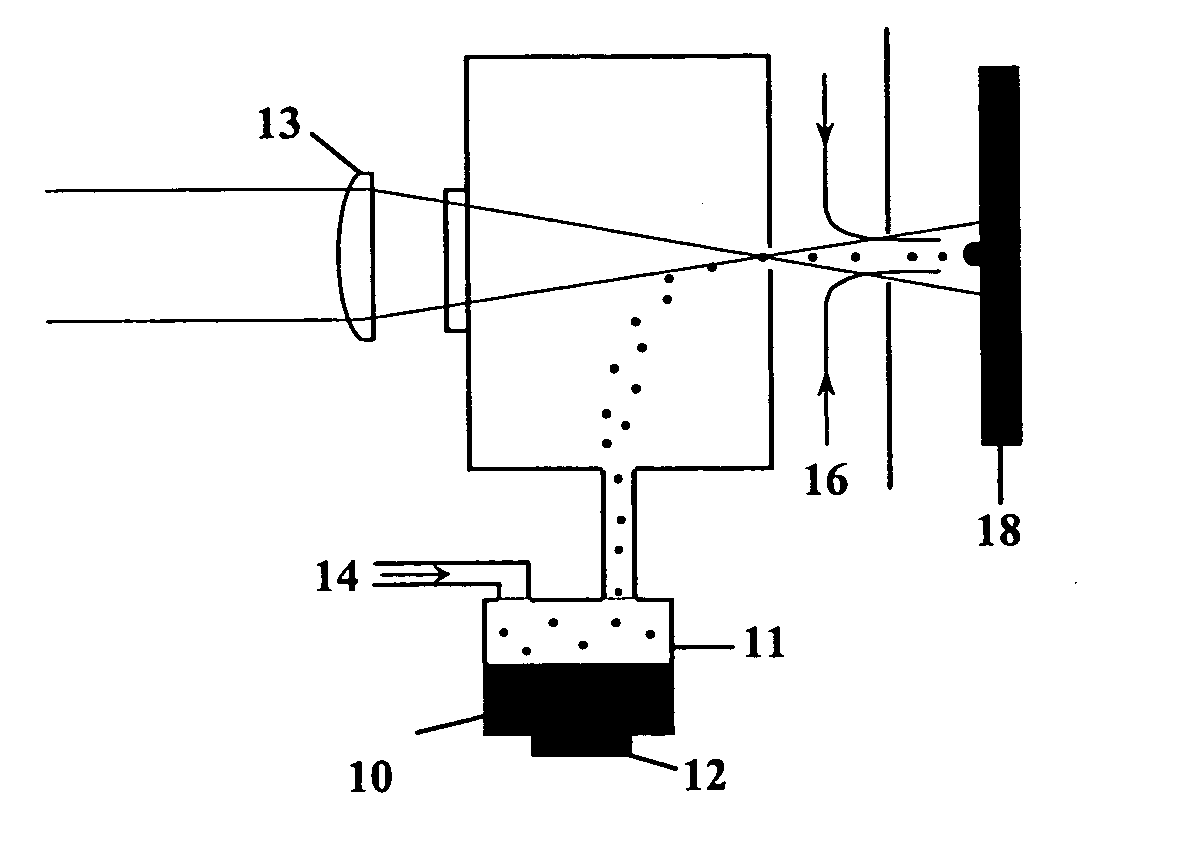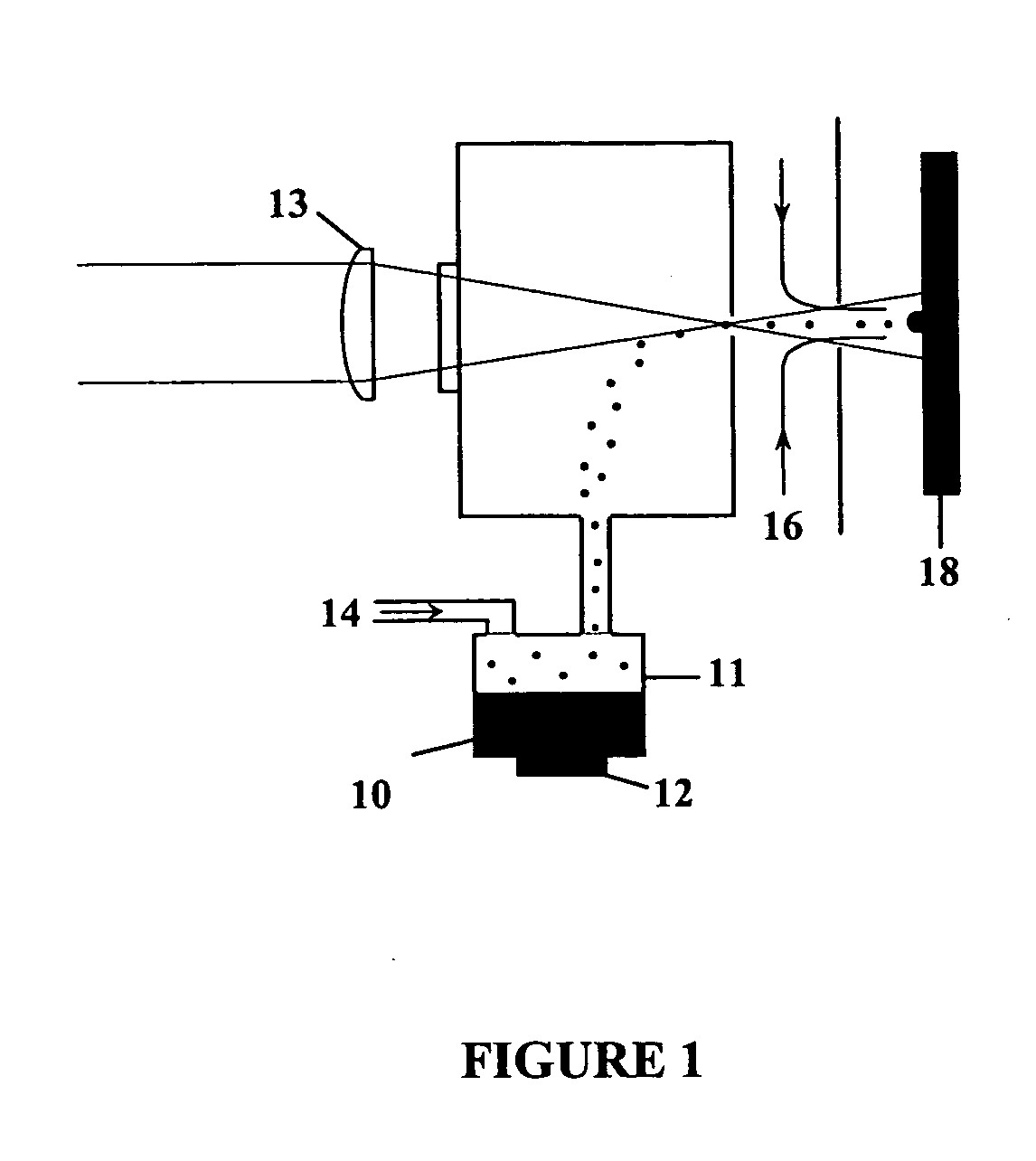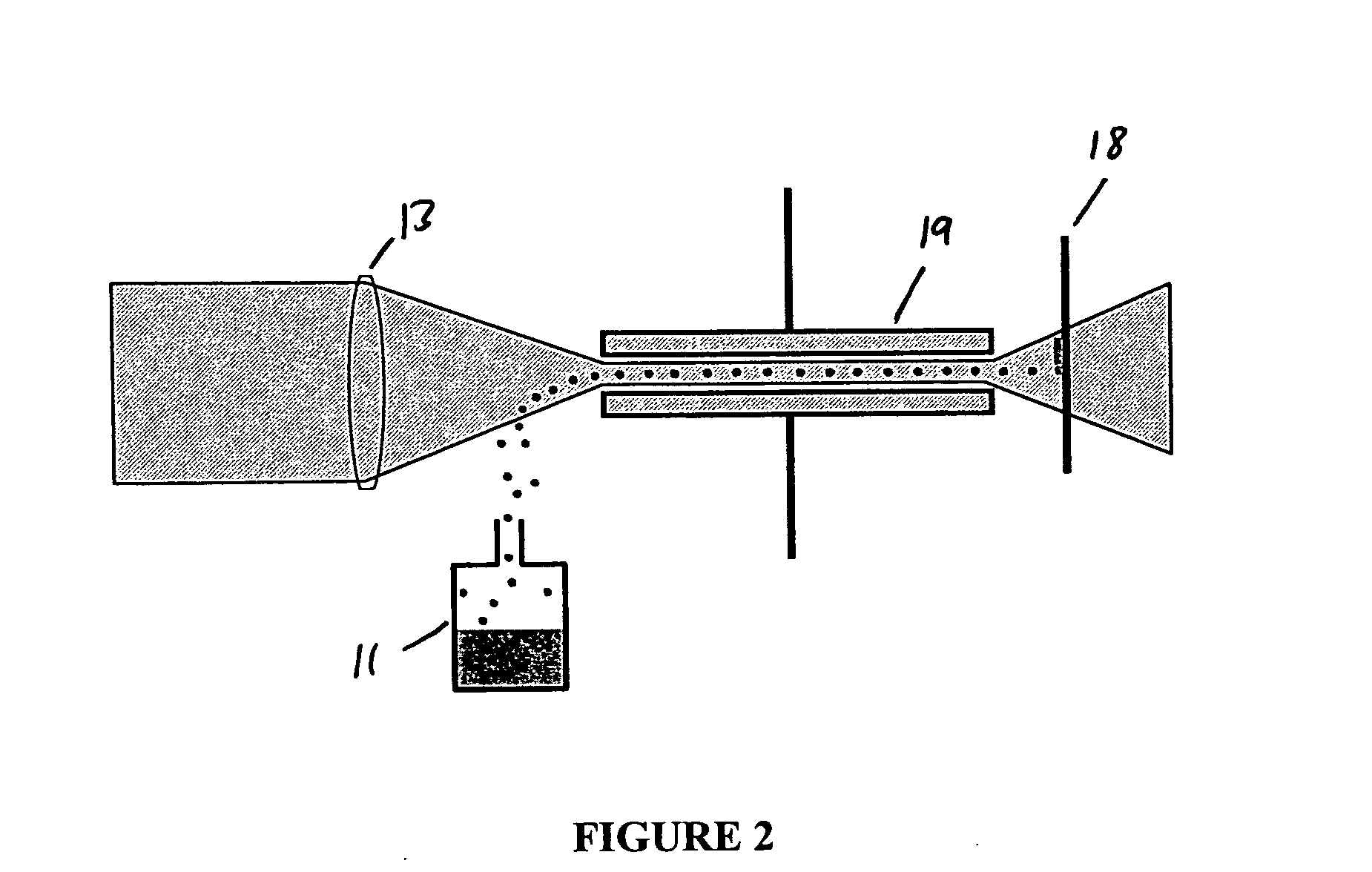Maskless direct write of copper using an annular aerosol jet
a technology of annular aerosol and write-in copper, which is applied in the direction of liquid/solution decomposition chemical coating, coating, printing, etc., can solve the problems of limiting the variety of materials which may be deposited, and reducing the decomposition temperature of the precursor, so as to prevent the crystallization of the deposit. , the effect of reducing the decomposition temperatur
- Summary
- Abstract
- Description
- Claims
- Application Information
AI Technical Summary
Benefits of technology
Problems solved by technology
Method used
Image
Examples
example
Deposition of Copper
[0133] For use with the M3D™ process, a solvent consisting of approximately 1-20% ethylene glycol / water by volume was saturated with copper formate to produce a dense liquid deposit. The copper formate concentration of the solution was at least 0.12 g / cc. Lower ratios can result in a dry deposit that is not easily processed to a conductive line, while higher ratios result in a smeared deposit. The optimum ratio of ethylene glycol to water is approximately 5%. The viscosity of the formulation typically ranges form approximately 1 to 50 cP. The concentration of the precursor can be increased by heating the precursor before atomization. As the aerosolized precursor cools during transport to the M3D™ deposition head, precipitation of the copper formate salt can occur, leading to improved rheology and decomposition characteristics of the deposit. The deposits optionally undergo a conventional thermal heating process in order to prepare the precursor for laser treatme...
PUM
| Property | Measurement | Unit |
|---|---|---|
| viscosity | aaaaa | aaaaa |
| temperature | aaaaa | aaaaa |
| feature size | aaaaa | aaaaa |
Abstract
Description
Claims
Application Information
 Login to View More
Login to View More - R&D
- Intellectual Property
- Life Sciences
- Materials
- Tech Scout
- Unparalleled Data Quality
- Higher Quality Content
- 60% Fewer Hallucinations
Browse by: Latest US Patents, China's latest patents, Technical Efficacy Thesaurus, Application Domain, Technology Topic, Popular Technical Reports.
© 2025 PatSnap. All rights reserved.Legal|Privacy policy|Modern Slavery Act Transparency Statement|Sitemap|About US| Contact US: help@patsnap.com



